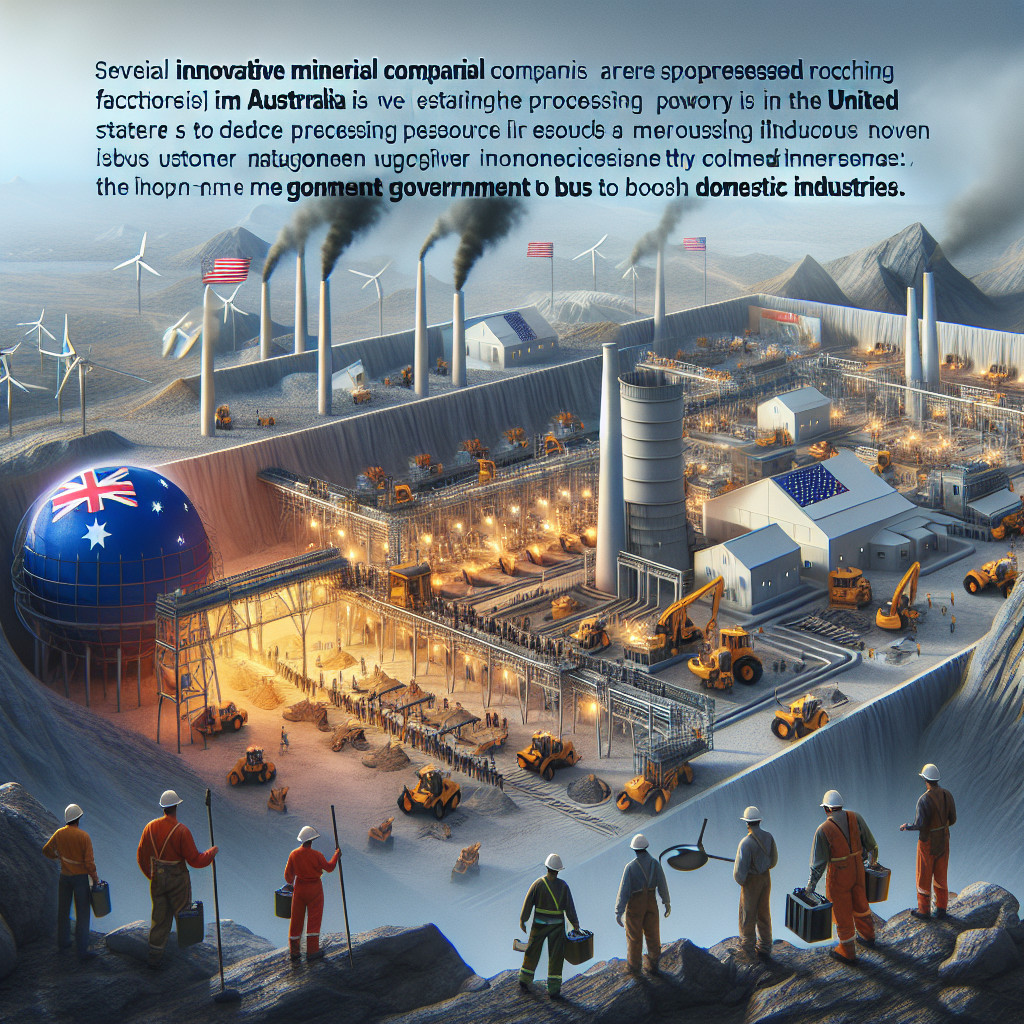With the Trump administration expanding its strategic mineral layout to reduce reliance on China, several advanced Australian key mineral companies are pushing forward plans to establish processing facilities in the United States. Despite the Australian government’s efforts to promote domestic industry development, the vast market size and policy incentives in the United States remain highly attractive.
According to Reuters, last week, a delegation consisting of Australian key mining companies visited Washington and New York, meeting with senior U.S. government officials and investors to advance their investment plans in the U.S.
Among them, several companies listed on the Australian Securities Exchange (ASX), including Australian Strategic Materials (ASM), Ionic Rare Earths, and International Graphite, are actively evaluating the establishment of processing or downstream facilities in the U.S. to expand operations and supply chain layout.
Industry insiders point out that the rapid growth in the U.S. electric vehicle, defense, and advanced manufacturing industries is generating significant demand. Coupled with low energy costs and substantial subsidies, these factors are driving Australian companies to expand their business in the U.S.
Annaliese Eames, Chief Legal Officer of ASM, revealed that they have identified six states as key inspection sites, including Oklahoma and South Carolina, emphasizing that the U.S. not only provides robust federal and state-level support but also demonstrates a strong determination to cultivate a complete industrial ecosystem.
Companies supplying defense clients tend to prefer setting up factories in the U.S. to meet security requirements and streamline complex industrial chain processes.
Tim Harrison, Managing Director of Ionic Rare Earths, stated that the company plans to replicate its magnetic recycling technology developed in Northern Ireland in multiple states in the U.S., with in-depth discussions already underway in Tennessee. Some states offer low electricity and labor costs and receive substantial government funding support, making them highly attractive.
Meanwhile, Andrew Worland, CEO of International Graphite, emphasized that in addition to constructing processing plants in Western Australia, the company also plans to establish facilities in the U.S. and Europe to better meet customer demand.
The Chinese authorities tightened controls on rare earth exports in April this year, prompting the U.S. to accelerate the development of its own rare earth industry, thereby driving up prices in Western markets and attracting more capital inflows.
However, competition is intensifying. Australia’s largest rare earth supplier, Lynas Rare Earths, warned last month that its heavy rare earth processing plant in Texas may face challenges in advancing due to unfavorable funding competition, partly because the U.S. government has provided billions of dollars in subsidies to domestic competitors.
This trend also underscores the structural challenges Australia faces in developing its critical mineral supply chain. A 2023 report by PricewaterhouseCoopers (PwC) estimated that if successful in creating new export markets, critical minerals could potentially add $170 billion Australian dollars (about $112 billion USD) in economic value to Australia by 2040.
However, Australia has long been constrained by high electricity prices, labor costs, and lengthy approval processes, leading to a decline in international competitiveness. The complete exit of the automotive industry in the 2010s has limited the scale of local advanced manufacturing, making it difficult to support downstream processing.
Harrison frankly stated, “The issue with building factories in Australia is, who do we sell the products to? The capacity for metals, alloys, and magnets has not been established in Australia, and the high cost environment hinders development.”
To address these challenges, the Australian government approved a $17 billion tax offset policy in February this year to provide key mineral processors with a 10% tax offset starting in 2027. At the same time, Australia is actively deepening cooperation with Japan, India, and the UK to seek to create a more complete industrial chain.
Amy Lomas, Chief Economist at PricewaterhouseCoopers Australia, pointed out that these measures are expected to pave the way for midstream and downstream processing, enhancing Australia’s position in the global supply chain.
(Translated and rewritten from a report by Reuters)

